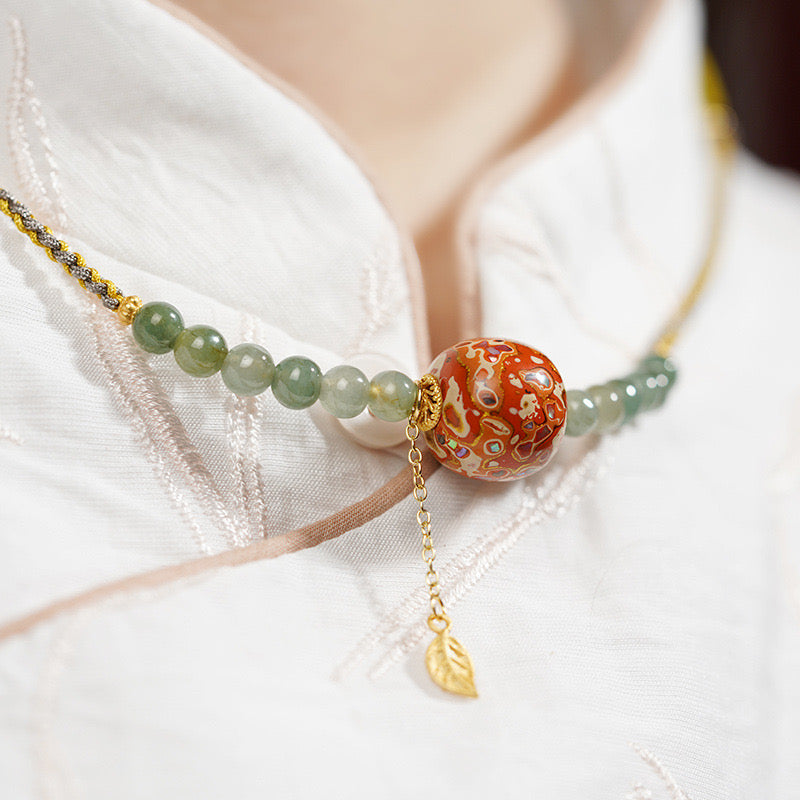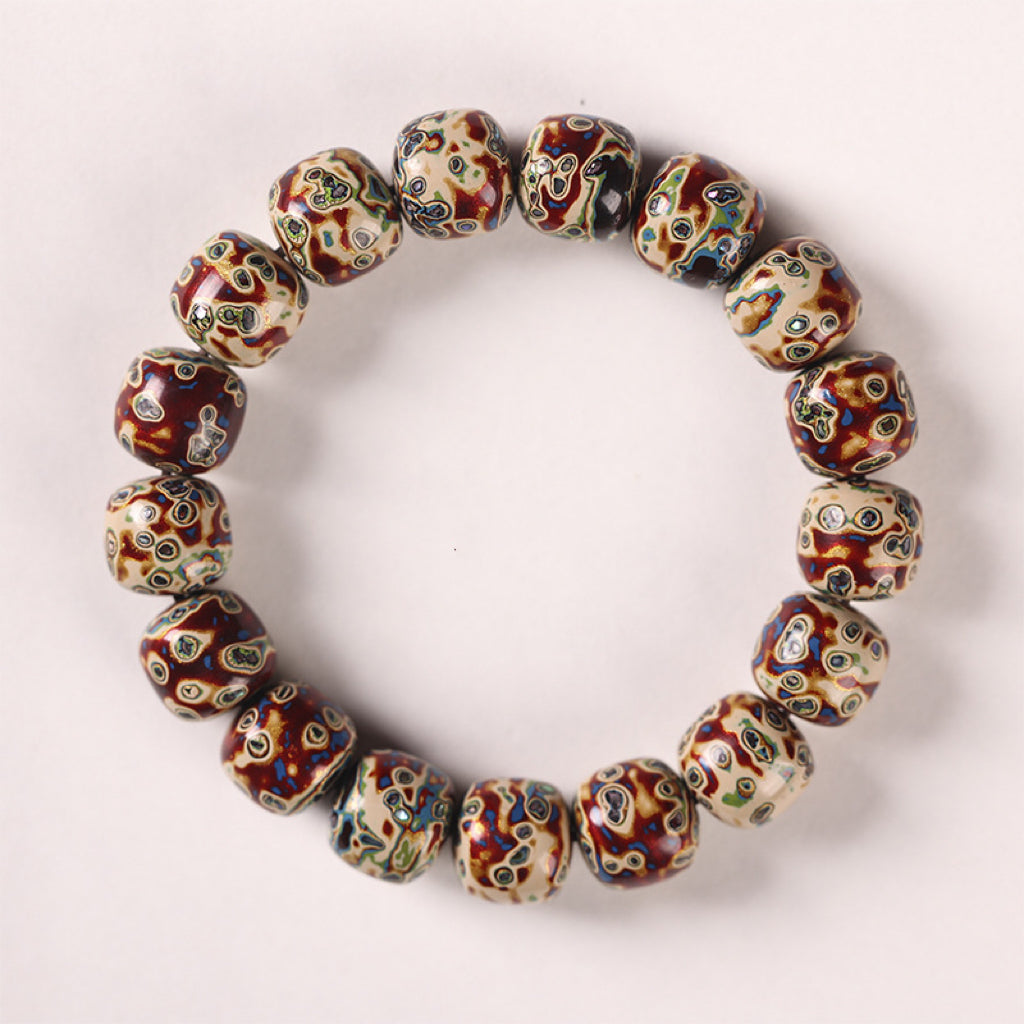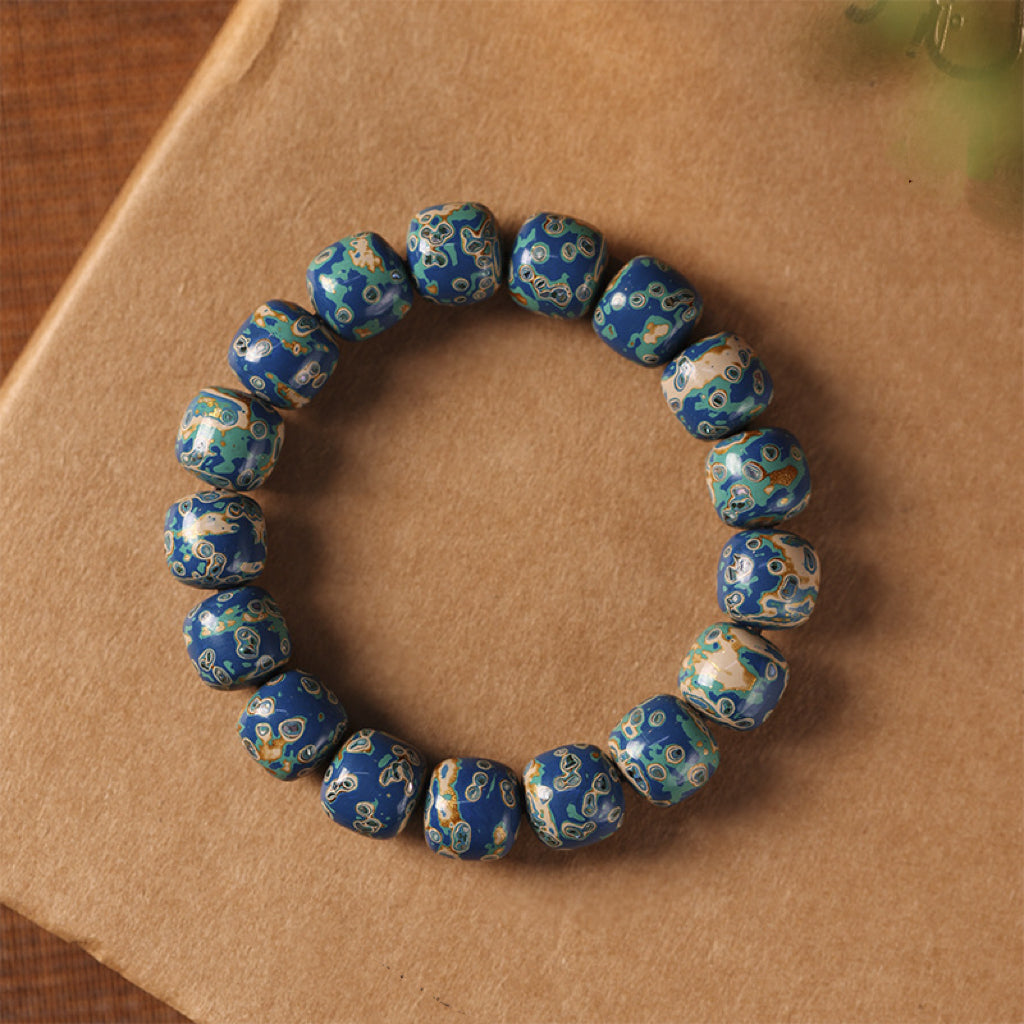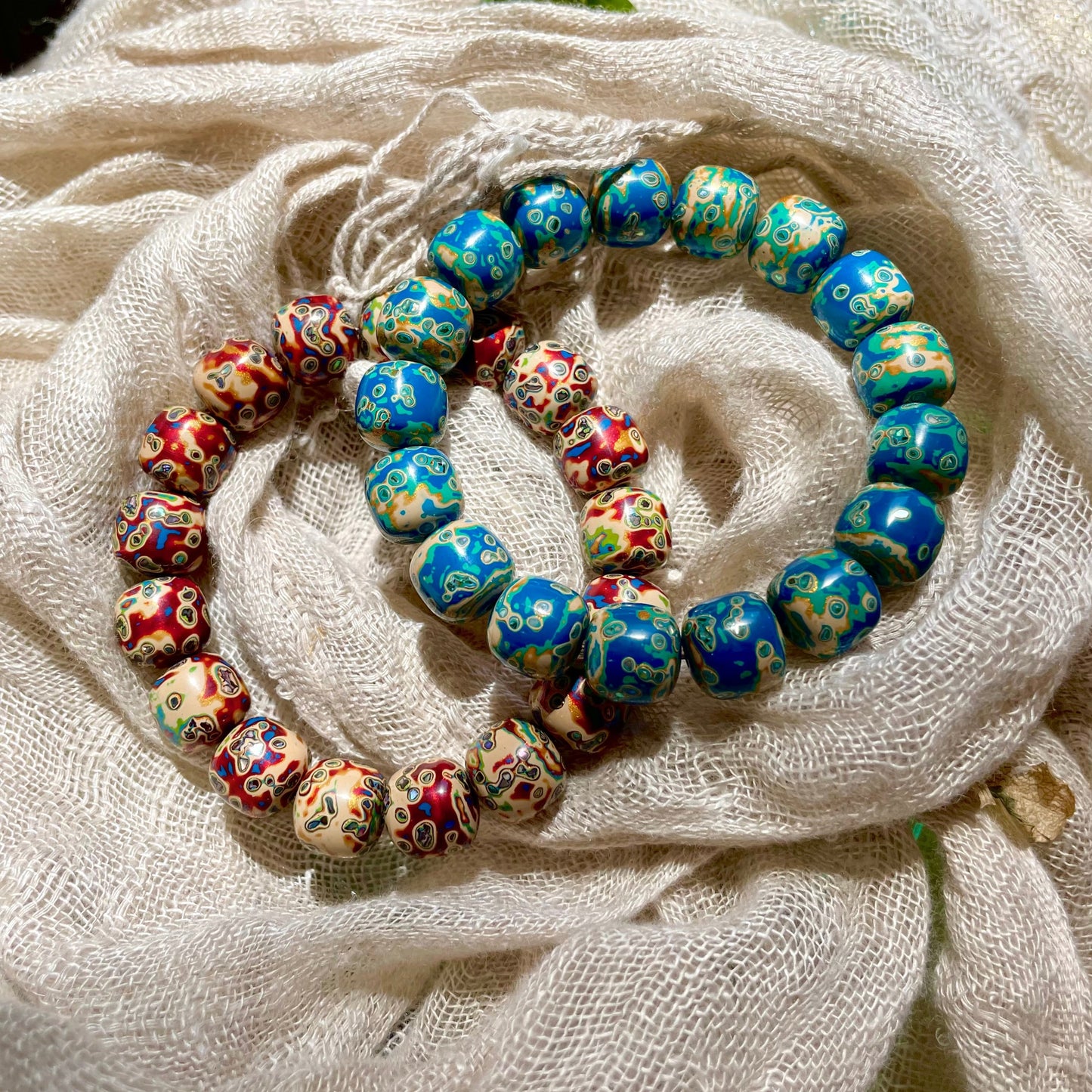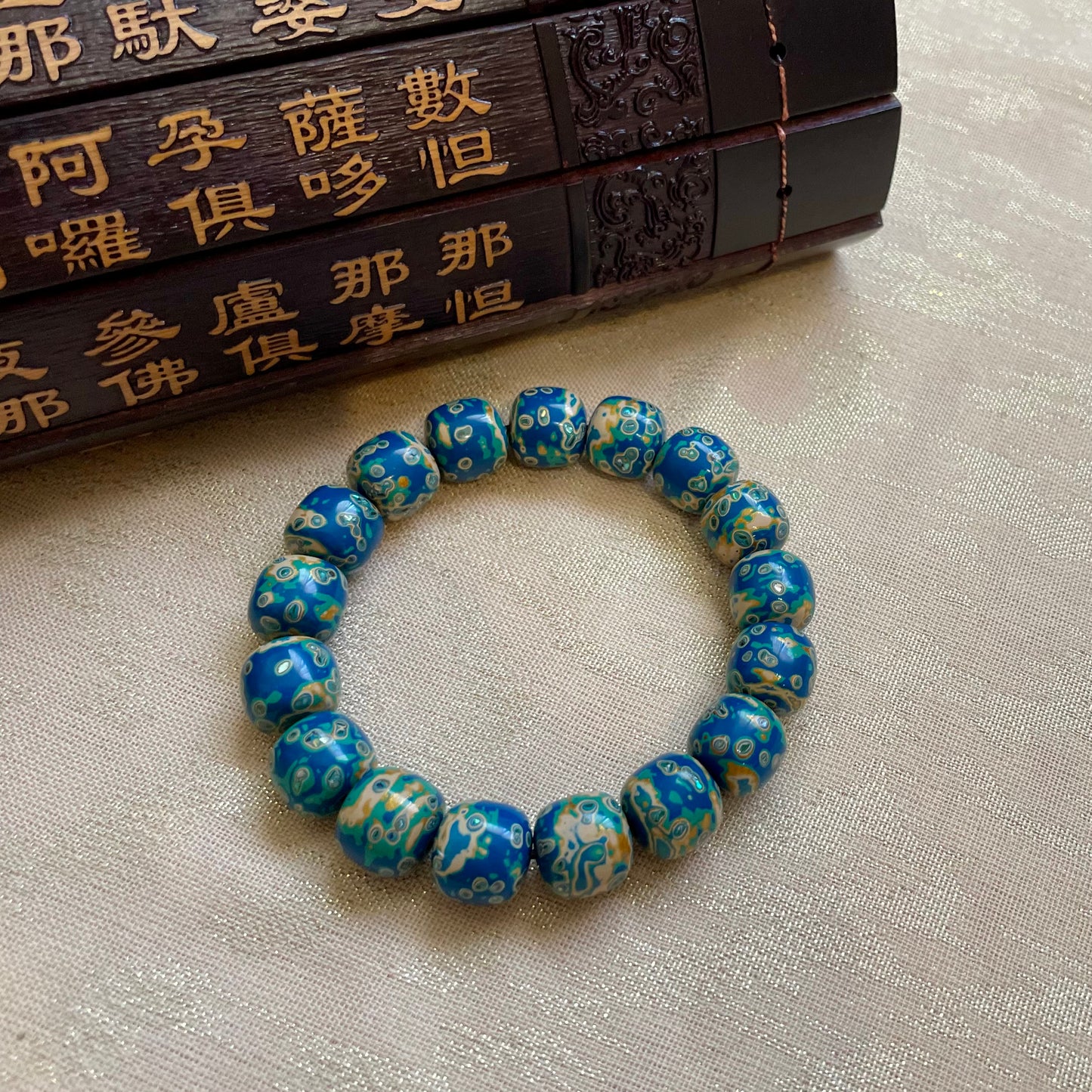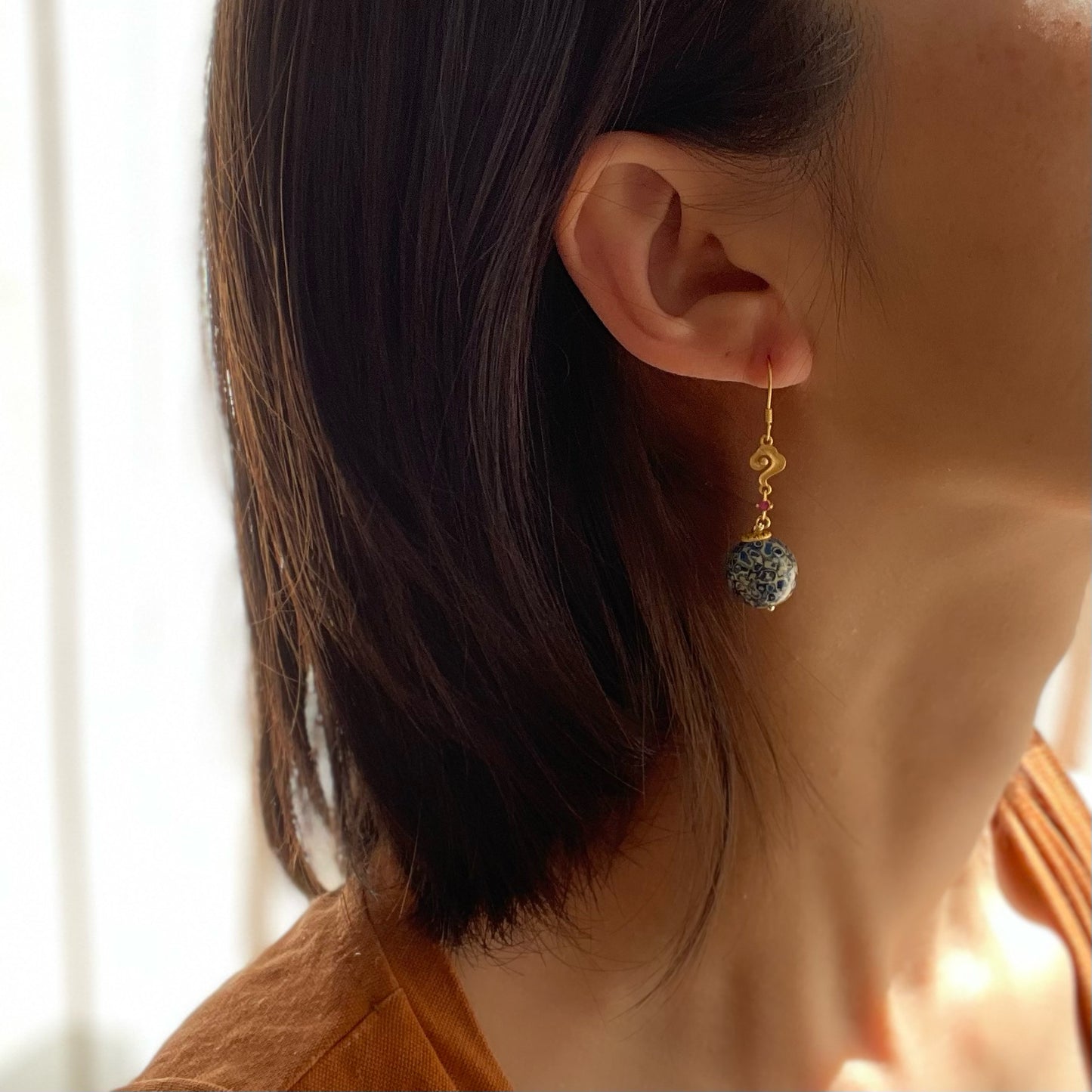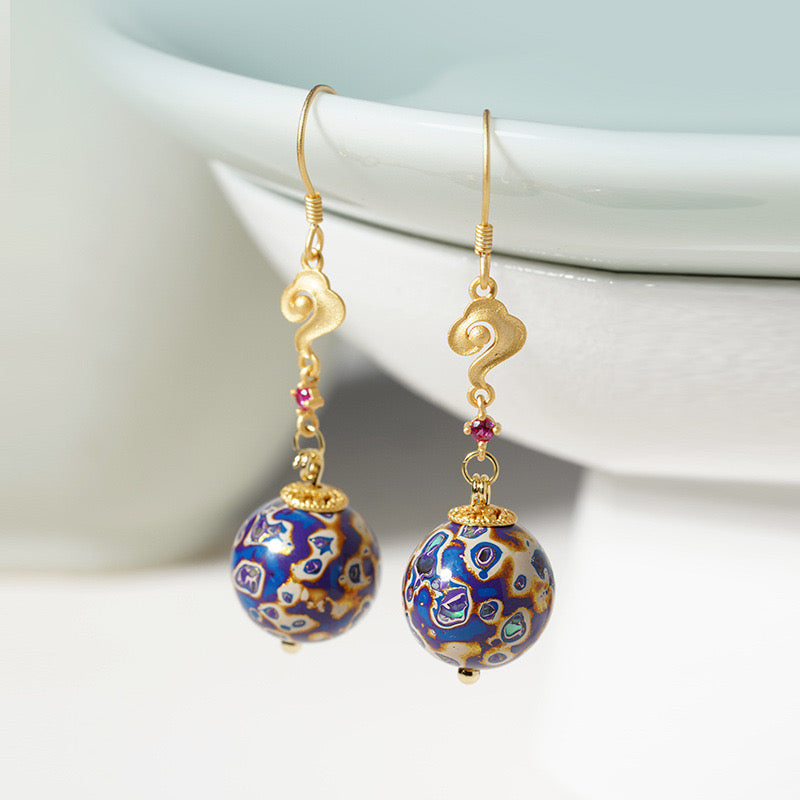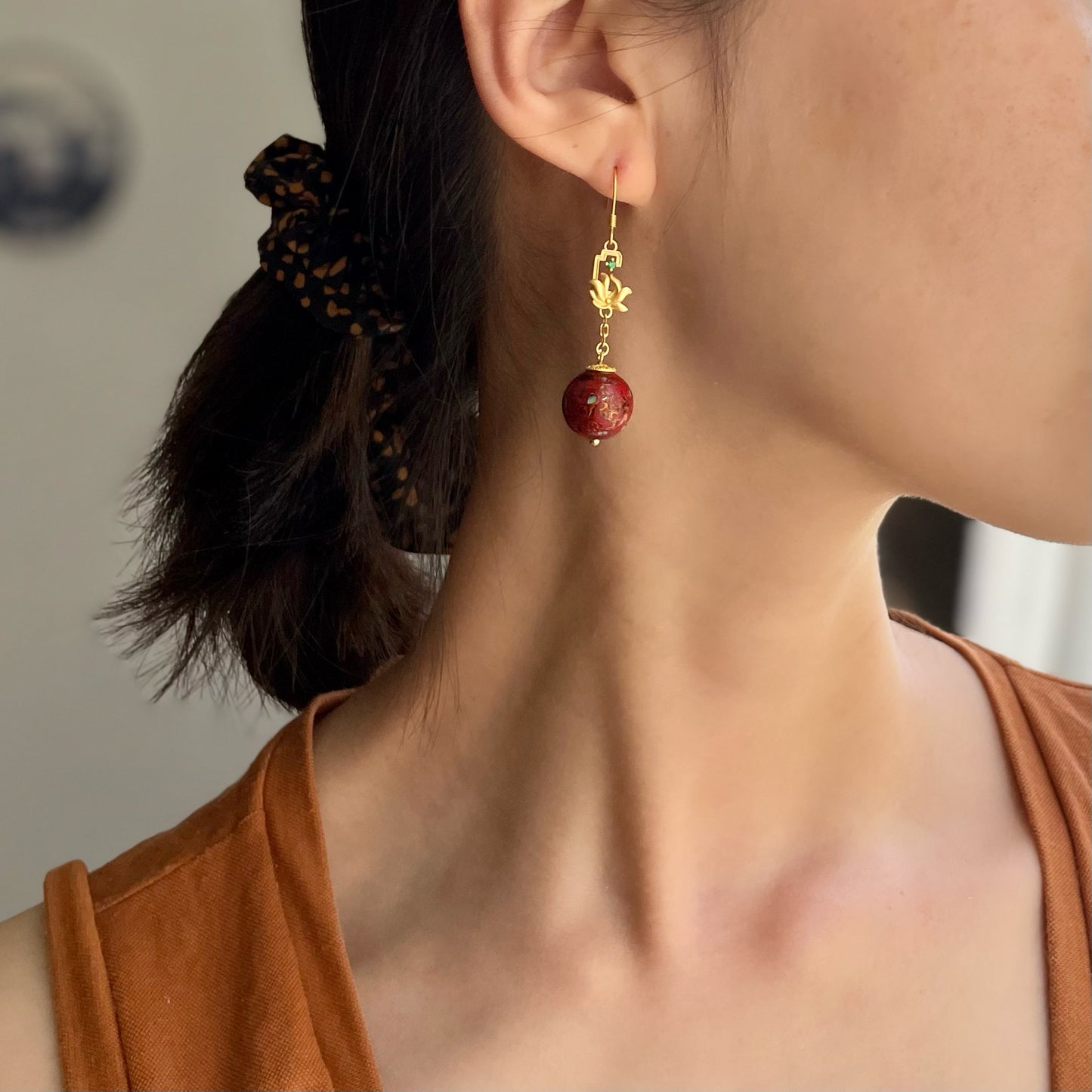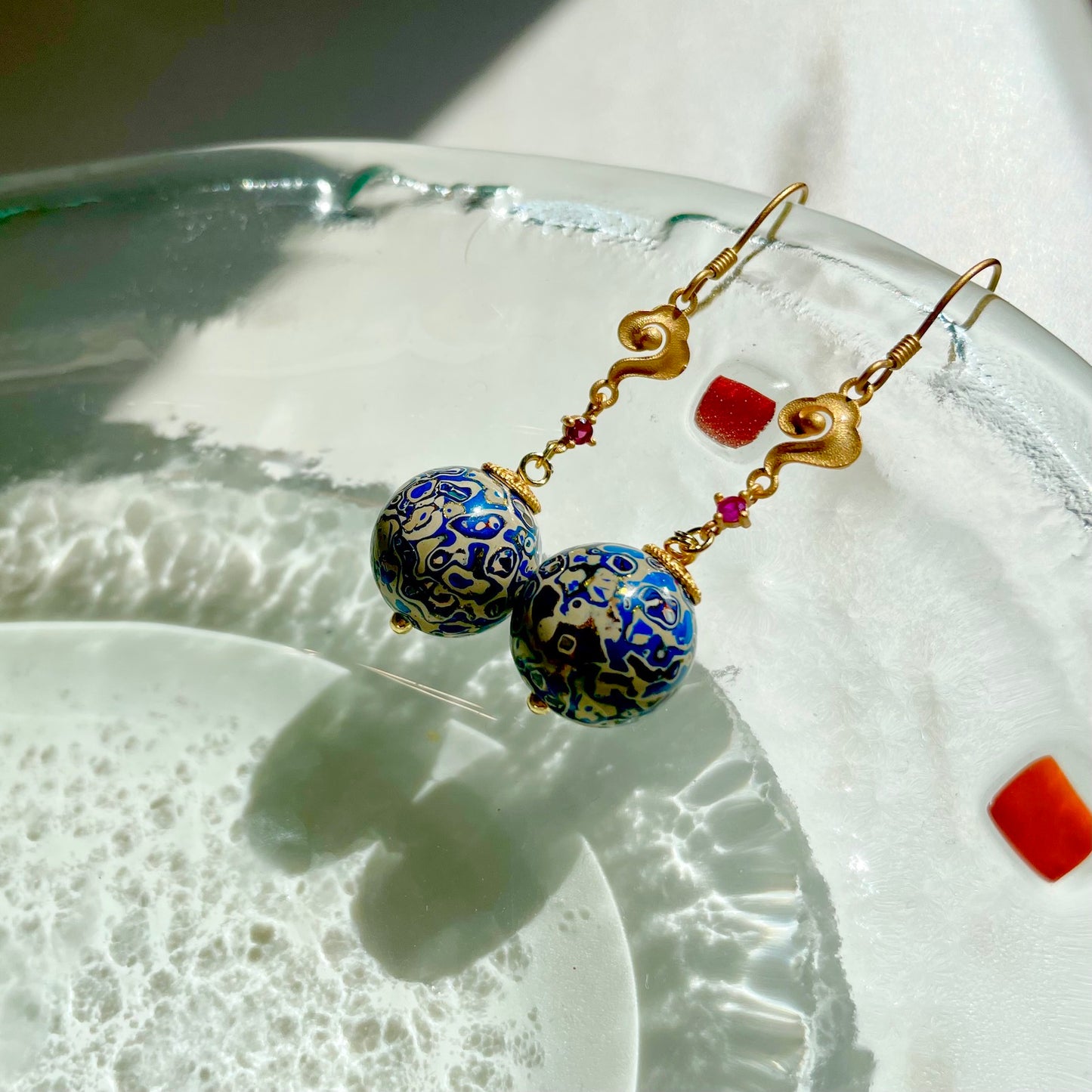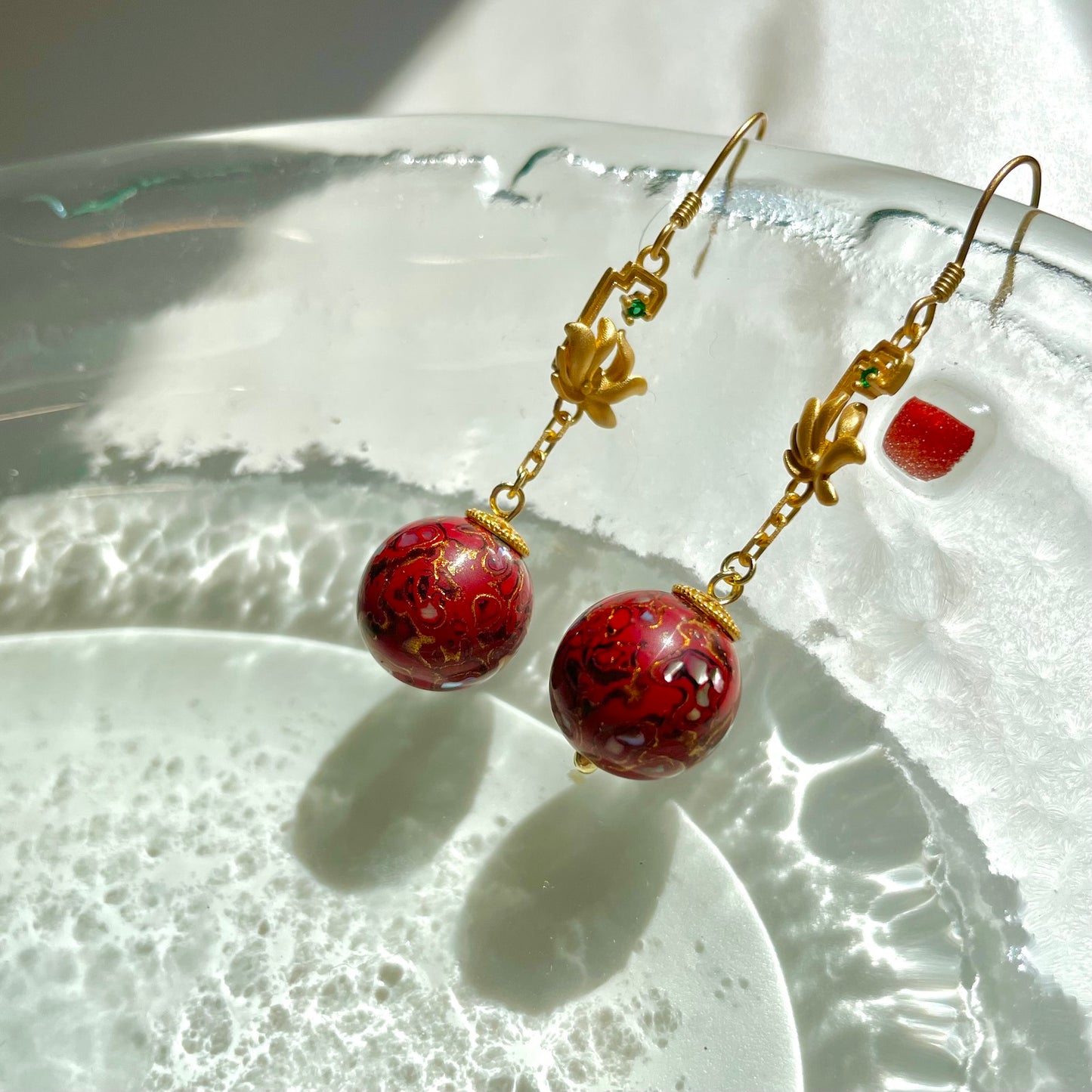[Previously ]
👉🏼👉🏼Shiny and Stunning: All About Lacquer Beads I 👈👈
III The popularity of inlaid lacquer beads
The lacquer beads from southern China are mostly inlaid and they are the most popular ones among young people. There is a saying that it is impossible to find two identical beads in the world. I think this is what makes the lacquer beads so special.
Opal inlay on lacquer beads is a technique where pieces of opal are inlaid onto a lacquer bead to create a decorative pattern or design.

Opal is a gemstone that is known for its unique play of color, which can create a dazzling display of hues ranging from blues and greens to reds and yellows. It is formed from silica and is a non-crystalline mineraloid. Opal is often used in jewelry making and is considered a precious gemstone along with diamonds, emeralds, rubies, and sapphires. The most famous sources of opal include Australia, Mexico, and the United States.
This technique combines the beauty of the opal with the traditional craftsmanship of lacquer art. It requires skilled artisans to carefully cut and shape the opal to fit the bead, and then use a special adhesive to attach the pieces onto the surface of the bead. The result is a stunning piece of jewelry or decorative item that showcases the unique qualities of both opal and lacquer. Opal symbolizes rainbow and brings a bright future to its owner. Its clear surface represents pure love, and it is also known as the "Cupid Stone". Wearing lacquer beads inlaid with opal can reflect charming colours in the sunlight.
Besides, inlaid lacquer beads, made by inlaying mother-of-pearl, also known as Luo Dian "螺钿" in Chinese, is a decorative craft in which thin slices made of shells and sea shells are inlaid on the surface of objects according to the needs of the picture. It is the most common traditional decorative art in China. Since the material comes from nature and is carefully polished by craftsmen, the finished product is often visually stunning, perfectly interpreting natural beauty.

It is said that Luo Dian was originated from lacquerware in the Shang Dynasty. In the early 1980s, Chinese archaeologists excavated a significant number of Western Zhou Dynasty Luo Dian inlaid lacquerware. One of the lacquerware pieces, which featured a painted animal face with a phoenix and a crow pattern, used Luo Dian inlay techniques. This is one of the earliest Luo Dian inlay lacquerware pieces ever discovered. By the Tang Dynasty, China's Luo Dian inlay technique had become quite mature, especially being decorated the back of copper mirrors, which was a masterpiece of the period.

IV Lacquer beads in contemporary art

Lacquer bead craftsmanship has evolved beyond traditional uses, with artisans now creating necklaces, bracelets, earrings and other decorative pieces. Young designers have joined the ranks of craftsmen, eager to pass the technique on to the next generation.

Wearing lacquer beads has grown in popularity, with many people choosing them as exquisite gifts for family and friends. Designers have incorporated lacquer beads into other jewellery pieces, enhancing their aesthetic appeal and distinctiveness. To cater to public curiosity about the production process, some craftsmen have developed toolkits for individuals to make lacquer beads in workshops. Numerous YouTube and Bilibili videos showcase the intricate craft and production techniques of lacquer beads.
Since lacquer is a natural paint, so there are no harmful substances. However, contact with partially dried lacquer may cause skin allergies. Wearing lacquer beads can calm one's mood and have the effect of clearing one’s mind. The rich organic substances contained in lacquer beads can make people’s skin fair and translucent, and have the effect of making the skin look healthy. It is said that wearing lacquer beads for a long time can also make people happy and improve their sleep.
By exploring the endless possibilities of lacquer art and jewelry, we can breathe new life into this ancient craft. The beauty and uniqueness of each handmade lacquer bead remind us of the rich cultural heritage behind this traditional art form. As we continue to innovate and experiment with lacquer, it will surely find new forms and applications in our daily lives. So let's continue to appreciate and cherish the beauty of lacquer beads, and keep this precious art form alive for generations to come.
By: Angel Ma
